- Home Page
- Company Profile
-
Our Products
- Microscope
- CONFOCAL MICROSCOPES
- Trinocular Upright Metallurgical Microscope
- Portable Grooved Metallurgical Microscope
- Cell Culture Imaging System
- Metallurgical Microscope
- Projection Microscope
- Student Stereo Microscope
- BINOCULAR STEREO ZOOM MICROSCOPE
- PCB Inspection Video Stereoscope Microscope
- SPINNERET MICROSCOPE
- Penta Head Microscope/ Multi view Head Microscope
- Research Polarising Microscope
- Senior Dissecting Microscope
- Dissecting Microscope
- Motorized Comparision Microscope
- Sieves Digital Microscopes
- Advance Inverted Tissue Culture Microscope
- Advance Stereo Zoom Microscope
- Student Projection Microscope
- Inverted Metallurgical Microscope
- Measuring Microscope
- Digital Spinneret Inspection Microscope
- Portable Inverted Tissue Culture Microscope
- Binocular Inverted Tissue Culture Microscope
- Student Compound Microscope
- Trinocular Stereozoom Microscope
- Advanced Research Microscope
- Gemological Microscope
- Polarizing Projection Microscope
- Senior Inspection Spinneretscope
- Confocal Microscope
- Senior Projection Microscope
- Toolmaker's Microscope
- Research Microscope
- Stereo Inspection Microscope
- Student Medical Microscope
- Digital Biological Microscope RXLr-4D
- Toolmaker Microscope Large
- Stereo Inspection Scope
- Trinocular Research Microscope
- Portable Metallurgical Microscope
- Binocular Research Microscope
- Student School Microscope
- Inverted Tissue Culture Microscope
- Projection Microscope
- Laboratory Microscope
- Decca Head Microscope
- Advanced Research Material Microscope
- Microtomes
- Semi Automatic Rotary Microtome
- Senior Precision Rotary Microtome
- Rocking Microtome
- Rotary Microtome Erma Type
- Freezing Microtome
- Fully Automatic Rotary Microtome
- Manual Rotary Microtome RMT-25
- Advance Rotary Microtome
- Hand Table Microtome
- Knife Sharpener Microtome
- Sliding Miocrotome
- Slide Staining Machine
- Rotary Microtome
- CRYOSTAT MICROTOME
- Optical Instruments
- Tissue Processor Machine
- Microscope Accessories
- Histopathological Equipment
- Lab Instrument
- Radical Digital Turbidity Meter
- Radical Microprocessor Dissolved Oxygen Meter
- Digital Photo Colorimeter
- Tap Density Tester
- Serological Water Bath
- Magnetic Stirrer
- Dual Channel Flame Photometer
- pH or mv or Conductivity
- Round Centrifuge
- Radical Disintegration Test Apparatus
- Digital Slide Scanner
- Precision Water Bath
- Incubator Shaker Water Bath
- Hemoglobin meter
- Microprocessor Colony Counter
- PASS BOX DYNAMIC
- Radical Microprocessor Colony Counter
- Bulk Density Apparatus
- Laboratory Rectangular Hot Plates
- Tablet Dissolution Test Apparatus
- Hemoglobin Meter (Sahli's)
- Micro Centrifuge 16000 R.P.M.
- Revolutionary General Purpose Digital Centrifuge
- Vortex Shaker
- Rectangular Water Bath
- Heating Mantel
- Digital Spectrophotometer
- Haematocrit Centrifuge
- Water Distillation with Metal Heater
- Hand Specimen Leveler Press
- GROSSING TABLE
- COOLING PLATE
- MICROPROCESSOR PH METER
- DIGITAL FLAME PHOTOMETER
- pH/mV/TEMPERATURE TESTER
- DIGITAL PH, CONDUCTIVITY & TEMPERATURE METER
- Radical Auto Karl Fischer Titrimeter
- Stereo Zoom Microscope
- Jewellery Making Microscope
- Binocular Stereo Microscope
- Advanced Stereo Zoom Microscope
- Articulated Trinocular Stereo Zoom Microscope
- Digital 3D Inspection Microscope
- Binocular Stereo Microscopes
- Motorized Stereo Microscopes
- Trinocular Microscope
- Stereo Inspection Microscope
- Stereo Microscope
- Digital 3D Inspection Microscope RSZ-3D
- Stereo Zoom Microscope RSM-8
- Polarising Microscopes
- Lab Consumables
- Profile Projector
- Optical Profile Projector
- Vertical Profile Projector
- Profile Projector RPP-500
- Profile Projector
- PROFILE PROJECTOR
- Universal Profile Projector
- Bench Type Profile Projector
- Charpy Profile Projector
- High Sharpness Profile Projector
- Profile Projector
- Horizontal Profile Projector
- Digital Profile Projector
- Radical Profile Projector
- Coaxial Profile Projector
- Anotomy Model
- Metallurgical Microscope
- Microscope
- Contact Us

Exploring the Fascinating World of Tiny Details with a Digital Stereo Microscope
In recent years, the advent of the Digital Stereo Microscope has revolutionized the way we explore and analyze the intricacies of the micro-world. As reported by the global market research firm Markets and Markets, the stereo microscope market is projected to reach USD 606.6 million by 2025, driven by advancements in technology and a growing demand for precise imaging in various fields such as materials science, biology, and electronics. The Digital Stereo Microscope offers users the ability to capture high-resolution images and videos of minute details, making it an invaluable tool for research and educational purposes.
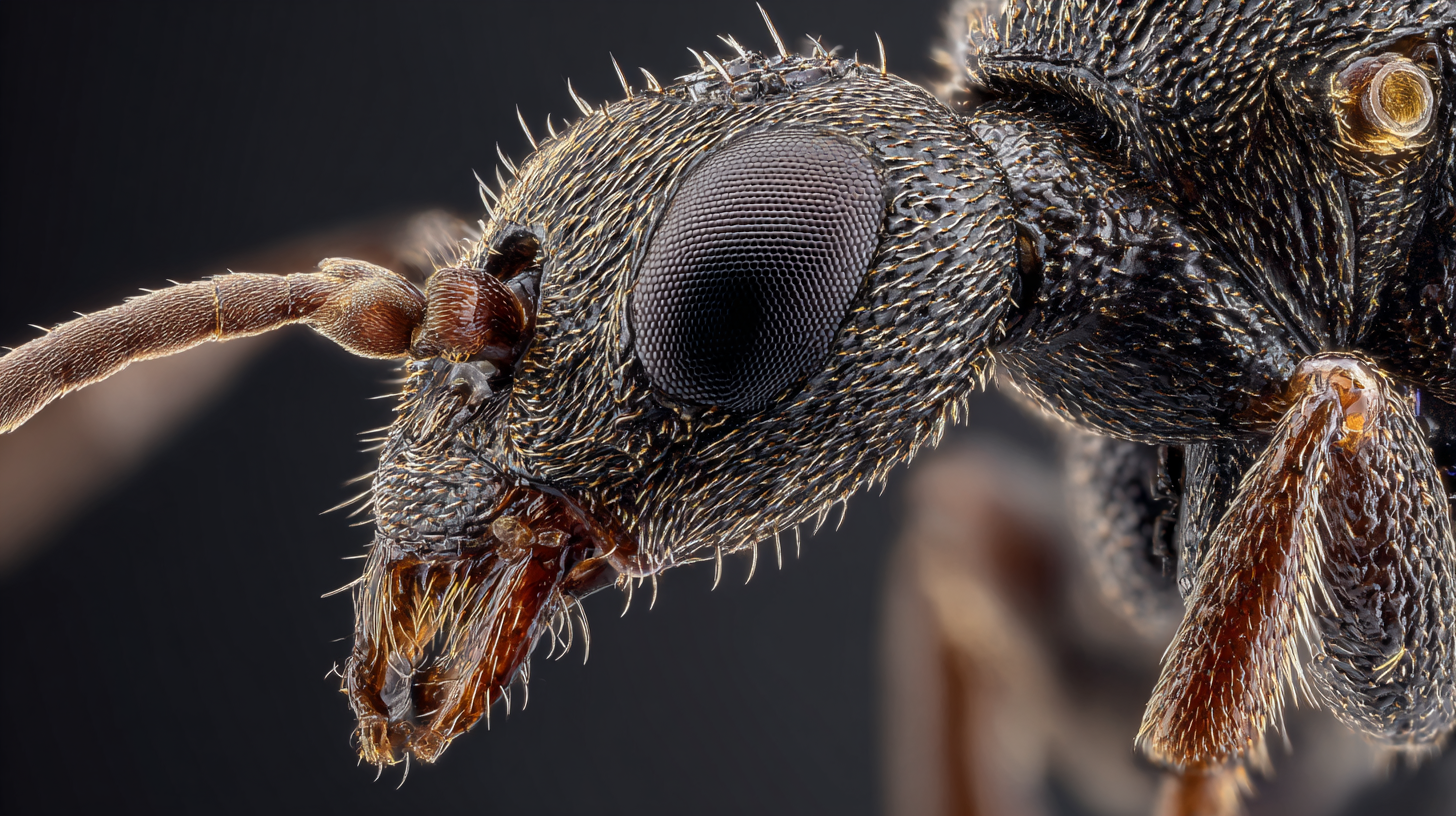
By facilitating a deeper understanding of complex structures and enhancing quality assurance, these devices play a critical role in industries that require meticulous inspection and analysis. This exploration into the capabilities and applications of Digital Stereo Microscopes reveals not only their technical advantages but also their impact on innovation and productivity across multiple sectors.
Table of Contents
[Hide]
Choosing the Right Digital Stereo Microscope for Your Needs
When it comes to selecting a digital stereo microscope, understanding your specific needs is crucial. These microscopes come in various types, each offering distinct features tailored to different applications. According to a recent market report by Research and Markets, the global digital microscope market is expected to grow at a CAGR of 9.3% from 2021 to 2026, highlighting the increasing interest in advanced imaging technologies. Factors such as magnification range, resolution, and lighting options should be considered carefully to ensure that you choose a model that aligns with your requirements.
**Tips:** When shopping for a digital stereo microscope, always check the magnification capabilities. For general use, a range of 10x to 40x is suitable for most tasks, while specialized applications may require higher magnification levels. Additionally, consider the microscope's compatibility with digital imaging systems if you plan to document your observations.
Another essential factor is the ease of use and ergonomics. A microscope that is comfortable to use for extended periods can enhance your productivity significantly. The FOA (Field of Application) report suggests that features like adjustable eyepieces and built-in cameras not only improve usability but also support more efficient workflows in labs and educational settings. Always test out different models if possible to find one that best fits your personal work style.
Exploring the Fascinating World of Tiny Details with a Digital Stereo Microscope
| Feature | Description | Importance |
|---|---|---|
| Magnification Power | The ability to enlarge the view of tiny objects, typically ranging from 10x to 200x. | High magnification is essential for observing small details and analyzing specimens. |
| Lighting Options | Integrated LED lights or adjustable lighting setups to enhance visibility. | Proper lighting is crucial for obtaining clear images and accurate colors. |
| Camera Resolution | The quality of the imaging system, usually measured in megapixels. | Higher resolution results in more detailed and clearer images for analysis. |
| Field of View | The extent of the observable area at a given magnification. | A wider field of view allows for easier scanning of larger specimens. |
| Ergonomics Design | User-friendly design promoting comfort during prolonged use. | Improves user experience, reducing fatigue during extended observations. |
Setting Up Your Digital Stereo Microscope for Optimal Viewing
When setting up your digital stereo microscope for optimal viewing, it’s essential to focus on a few key elements. First, ensure that your microscope is placed on a stable, flat surface to eliminate any vibrations that could distort the images you observe. Additionally, adjust the height and angle of your microscope to avoid neck strain and to provide a comfortable viewing position.
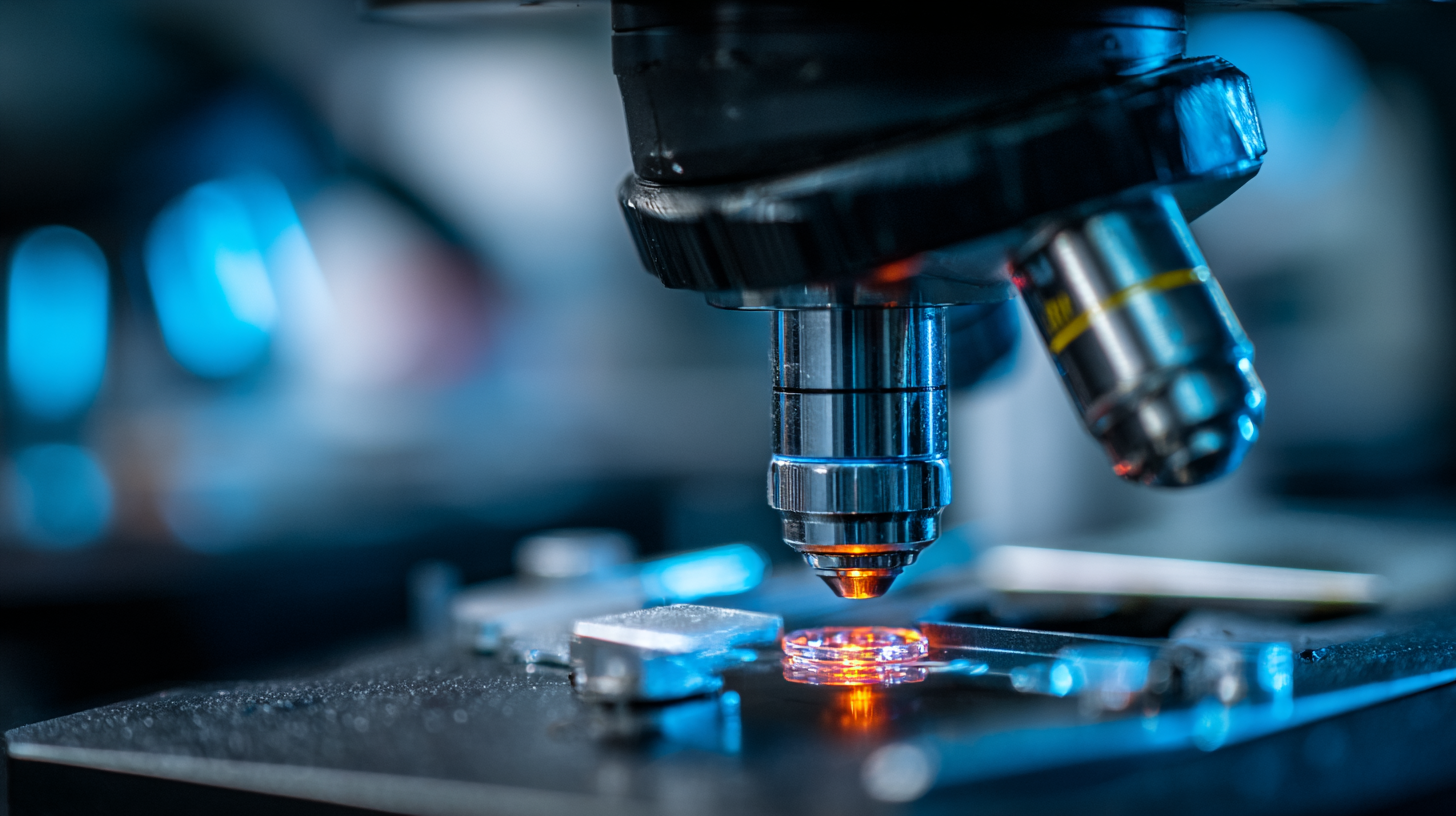
Tips: Always start by calibrating the focus. Use a calibration slide to help set the necessary adjustments for depth and clarity. This initial step will significantly enhance the quality of your observation. Furthermore, ensure proper lighting by using LED illumination or adjustable lamps. Good lighting is crucial in revealing the intricate details of your samples, allowing for a more comprehensive examination of their features.
Another important aspect is selecting the right magnification level. Begin with a lower magnification to get an overview of your specimen and gradually increase as needed for detailed analysis. This approach not only helps in recognizing structures but also prevents overwhelming your observations with excessive detail at first glance. With these setup guidelines, you'll be well on your way to exploring the fascinating world just beneath the surface.
Techniques for Capturing Stunning Images of Tiny Details
The captivating realm of tiny details, visible only through the lens of a digital stereo microscope, opens up new avenues for photographers aiming to capture the intricate beauty of small subjects. Techniques such as using focused lighting and adjusting magnification levels can significantly enhance the quality of imagery. For instance, utilizing backlighting can reveal textures and colors that are otherwise obscured in conventional photography. Recent advances in optical science have enabled scientists to produce unprecedented images of minute structures, including the clearest pictures ever of the sun's corona, demonstrating how precision and technique in photography can yield stunning results.
In the age of AI, tools like Google's Gemini have transformed how we approach photo editing and composition. This new technology allows photographers to experiment with creative edits that can enhance macro shots, whether they are of tiny insects or microbial life. The recent Nikon Small World competition showcased award-winning images that highlight the hidden beauty of microscopic worlds, emphasizing the growing interest and capability in capturing small-scale details. Professionals and enthusiasts alike must stay abreast of these technological innovations and techniques to thrive in this fascinating niche of photography.
Post-Processing Tips for Enhancing Microscope Images
Post-processing microscope images can significantly enhance the visualization of minute details captured by a digital stereo microscope. Utilizing software tools, users can adjust brightness and contrast to highlight specific features within an image. This enhancement not only makes the details more pronounced but also improves the overall clarity, aiding in better interpretation and analysis of the microscopic world.
Another effective technique is the use of sharpening filters, which can bring out fine textures and edges that may be lost during the initial capture. Applying these filters can lead to a more defined appearance, allowing for more accurate assessments of the specimens being studied. Additionally, adjusting colors and applying selective saturation can help set apart different structures or materials, highlighting distinctions that are crucial for scientific research or educational purposes. By mastering these post-processing tips, users can transform their digital microscope images into stunning visual representations of intricate details.
Enhancing Microscope Images: Post-Processing Effectiveness
Exploring Applications of Digital Stereo Microscopy in Various Fields
Digital stereo microscopy is revolutionizing industries by enabling experts to explore minute details with unprecedented precision. Its applications span various fields, such as material science, life sciences, and semiconductors, facilitating advancements that were previously unachievable. According to market research, the microscope software market is projected to experience significant growth by 2033, underscoring a rising demand in sectors leveraging advanced imaging technologies.
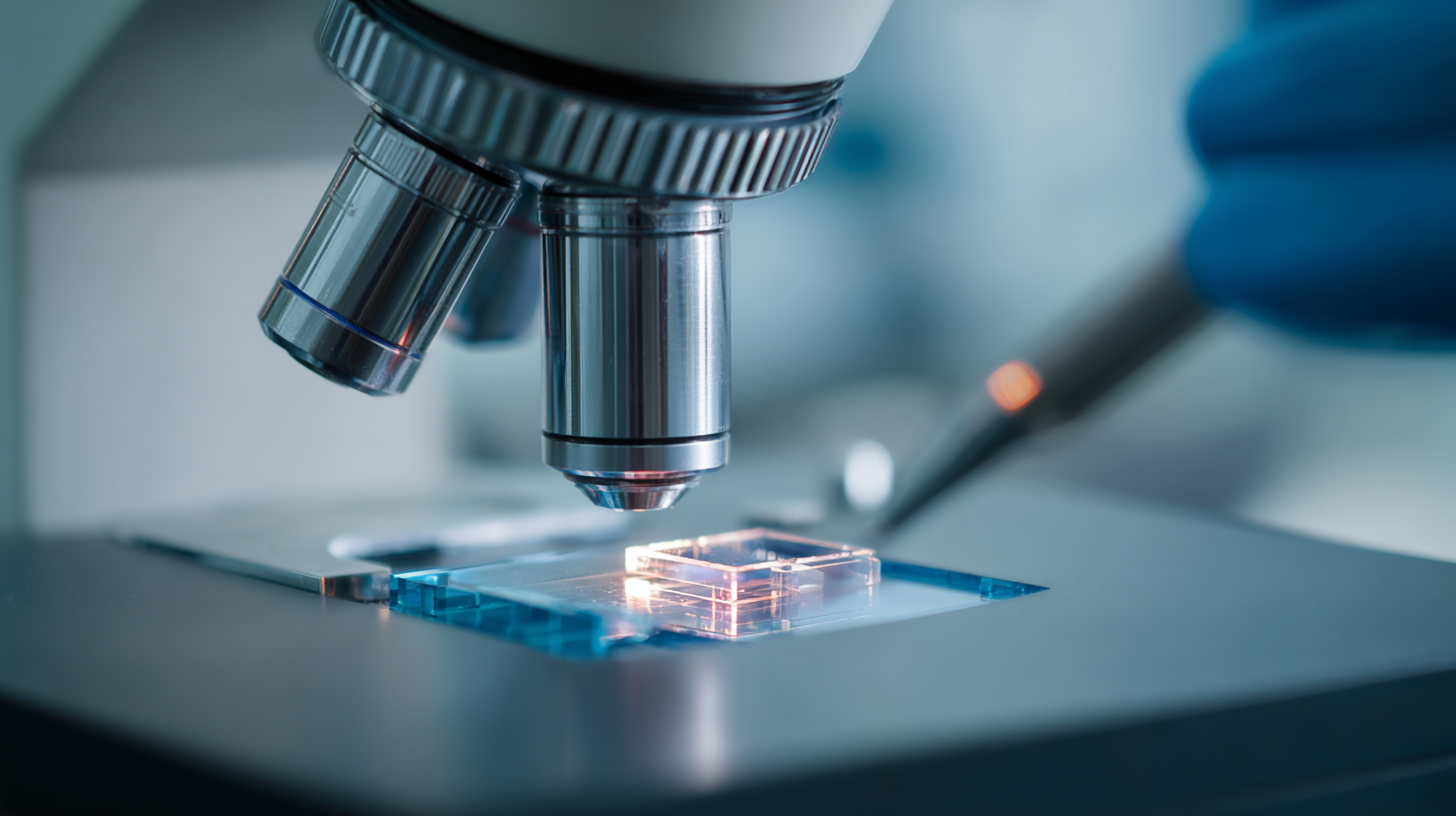
In medical manufacturing, digital stereo microscopes play a crucial role in quality control and assurance. By integrating optical expertise with digital advancements, industries can enhance their quality assurance processes efficiently. Innovations like AI-driven precision are transforming traditional methods, making them more ergonomic and modular. These advancements improve both accuracy and workflow, showcasing the potential of stereo microscopy in practical applications.
Tips: When investing in a digital microscope, consider the depth of field and resolution to ensure optimal performance for your specific needs. Additionally, explore portable options that offer versatility for on-site documentation, which is increasingly popular among researchers wanting to utilize micro-photogrammetry techniques. These features can significantly enhance the capabilities of your analytical work.
Related Posts
-

Unlocking Growth: The Advantages of Using a Digital Stereo Microscope in Your Industry
-
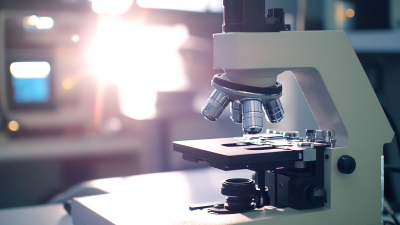
How to Choose the Best Digital Microscope for Your Needs
-
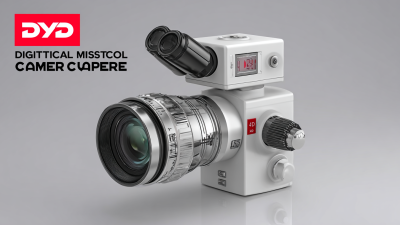
Exploring the Advantages of Best Digital Microscope Cameras for Global Buyers
-
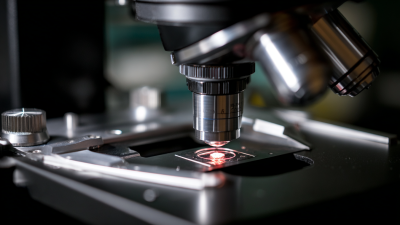
The Future of Precision with Best Digital Inspection Microscopes
-
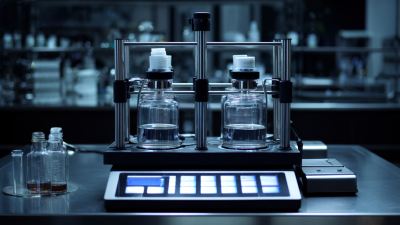
The Future of Innovative Lab Equipment Transforming Scientific Research
-

Overcoming Issues with Choosing the Best Laboratory Equipment for Your Needs
Contact Us
- 9th Milestome, Ambala-Jagadhri Road, P.O.- Khudda Kalan, NH-444A,Ambala Cantt - 133104, Haryana, India
- Phone : 08045479132
- Mrs POONAM BHANDARI (Incharge - Mktg & Sales )
- Mobile : 08045479132
- Send Inquiry
GST : 06AACCR8985N1ZI
Our Products
RADICAL SCIENTIFIC EQUIPMENTS PVT. LTD.
All Rights Reserved.(Terms of Use)
Developed and Managed by Infocom Network Private Limited.
Developed and Managed by Infocom Network Private Limited.



